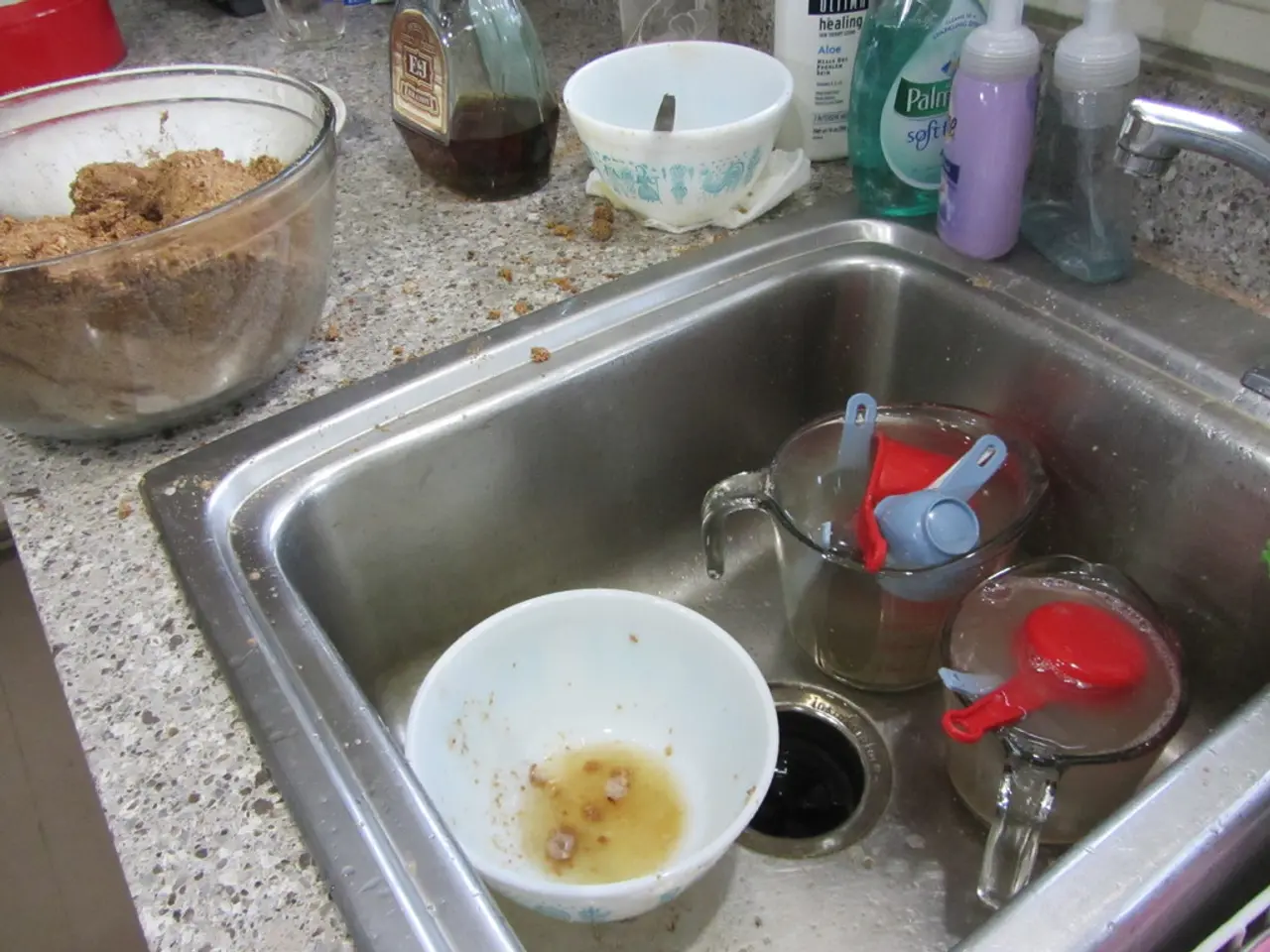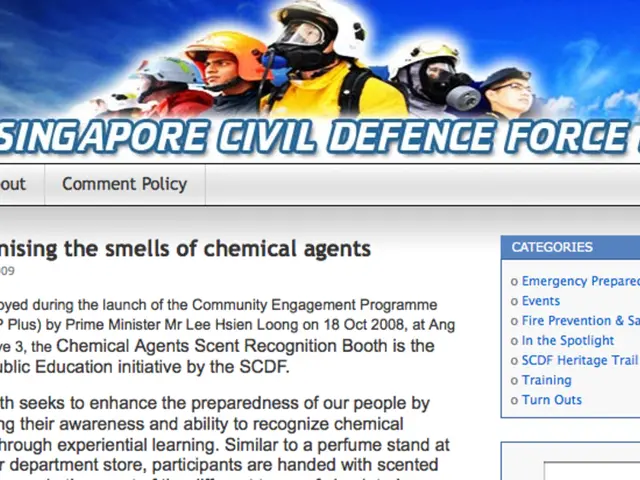Workplace Health and Safety: A Comprehensive Scientific Study on Maintaining a Health-Conscious Environment
In today's fast-paced and evolving workplaces, the importance of industrial hygiene has never been greater. This scientific discipline, focused on identifying, evaluating, and controlling workplace hazards to protect employee health and safety, is undergoing significant transformations thanks to advancements in technology, data analytics, and global standards.
One of the key developments is the advent of real-time air monitoring systems and portable sampling devices. These innovative tools are improving the accuracy, efficiency, and flexibility of detecting airborne contaminants in workplaces, enabling a quicker response to potential risks. Enhanced analytical techniques now allow for the identification of complex mixtures and low-concentration hazardous substances more effectively.
The integration of Artificial Intelligence (AI) and data analytics is another game-changer. AI is revolutionising industrial hygiene by enabling organisations to analyse large datasets for identifying health and safety trends, predicting hazards, and optimising safety controls. AI-powered wearable devices can monitor worker conditions such as fatigue, stress, exposure to noise, temperature, and chemicals in real time, facilitating proactive interventions.
Automation and robotics, particularly in hazardous industries like manufacturing and construction, are reducing direct human exposure to dangerous environments. However, this shift also introduces new occupational risks related to operating and maintaining advanced machinery, necessitating updated safety protocols.
There is a growing movement towards harmonising occupational health and safety (OHS) standards internationally, driven by globalisation and multinational industry operations. Compliance with standards like ISO 45001 (Occupational Health and Safety) and ISO 14001 (Environmental Management Systems) helps companies align with best practices and regulatory requirements worldwide.
The introduction of new chemicals and materials presents novel hazards that require dedicated research and updated safety measures. The impact of climate change on occupational health is gaining attention, influencing future industrial hygiene initiatives. An aging workforce requires adapted approaches to occupational hygiene to address age-related susceptibility to chronic health conditions and injury risks.
The market for industrial cleaning chemicals is expanding rapidly, driven by heightened emphasis on hygiene in workplaces such as healthcare, food processing, and manufacturing. Innovations in cleaning agents, particularly surfactants, play a vital role in maintaining sanitation and preventing occupational diseases linked to contaminated environments.
These advancements collectively contribute to a safer, healthier workplace environment by enhancing the anticipation, recognition, evaluation, and control of occupational hazards in dynamic and complex industrial settings. Industrial hygiene operates through four interconnected components: anticipation and recognition of hazards, evaluation of workplace conditions, engineering controls, and administrative controls.
Environmental Monitoring involves regular measurement and analysis of workplace conditions using calibrated instruments, such as air quality assessments, gas detection equipment, sound level meters, temperature humidity loggers, and radiation detectors. Noise levels exceeding 85 decibels in manufacturing areas are a potential hazard.
The evolution of industrial hygiene spans three distinct periods: Early Industrial (1700s-1900s), Modern Formation (1900-1950), and Contemporary (1950-Present). Specialized Equipment includes impact-resistant safety glasses, hearing protection devices rated for specific decibel levels, and cut-resistant gloves based on material handling needs. Body Protection includes chemical-resistant suits for hazardous materials, high-visibility clothing in traffic areas, and heat-resistant gear for extreme temperatures.
Ionizing radiation from X-ray machines, nuclear materials is a workplace hazard. Required skills and qualifications for industrial hygienists include a Bachelor's degree in industrial hygiene, chemistry, engineering, or environmental science, a Master's degree for advanced positions, professional certification (CIH) from the American Board of Industrial Hygiene, proficiency in sampling equipment calibration and operation, knowledge of analytical methods and laboratory procedures, understanding of ventilation systems and engineering controls, expertise in regulatory standards, data analysis and statistical interpretation capabilities, strong analytical problem-solving abilities, excellent written and verbal communication skills, a detail-oriented approach to documentation and reporting, project management and organisational capabilities, and the ability to work independently and collaborate effectively.
Viruses transmitted through human contact are a workplace health hazard. Industrial hygienists conduct comprehensive workplace assessments, design sampling strategies, analyse data, recommend control measures, develop health and safety programs, train employees, investigate incidents, maintain compliance documentation, and collaborate with management safety committees and medical professionals.
In conclusion, the future of industrial hygiene will be increasingly interdisciplinary, integrating environmental sustainability and corporate social responsibility to promote broader health and well-being at work.
- The integration of technology, such as real-time air monitoring systems and portable sampling devices, is improving the accuracy and flexibility of detecting airborne contaminants in workplaces.
- AI is revolutionizing industrial hygiene by enabling organizations to analyze large datasets for identifying health and safety trends, predicting hazards, and optimizing safety controls.
- AI-powered wearable devices can monitor worker conditions like fatigue, stress, exposure to noise, temperature, and chemicals in real time.
- The market for industrial cleaning chemicals is expanding, playing a vital role in maintaining sanitation and preventing occupational diseases linked to contaminated environments.
- Specialized equipment used in industrial hygiene includes impact-resistant safety glasses, hearing protection devices rated for specific decibel levels, and cut-resistant gloves based on material handling needs.
- Industrial hygienists require a combination of skills, including a Bachelor's degree in a relevant field, professional certification, proficiency in sampling equipment, knowledge of analytical methods, understanding of regulatory standards, strong communication skills, and project management capabilities.
- The future of industrial hygiene will integrate environmental sustainability and corporate social responsibility to promote broader health and well-being at work, which includes aspects like workplace-wellness, health-and-wellness, and job-search, touching areas like career-development, education-and-self-development, personal-growth, and therapies-and-treatments under the Medicare umbrella.




